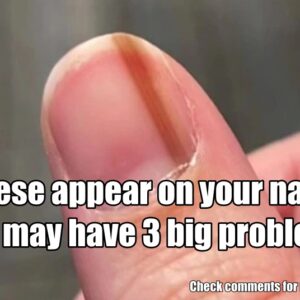Eye floaters are a common yet often misunderstood visual phenomenon.
Whether they appear as squiggly lines, specks, or cobwebs drifting across your vision, they can be concerning at first glance.
Understanding what causes them and when to seek medical attention is crucial. Here’s what experts have to say about how to handle them.
What Are Eye Floaters?
 Credit: Adobe Stock
Credit: Adobe Stock
Eye floaters are small shapes that seem to drift across your field of vision.
They might look like spots, threads, or squiggly lines, and they become especially noticeable when looking at a bright background, such as a clear sky or a white wall.
These shapes move as your eyes move and can seem to dart away when you try to focus on them.
What Causes Eye Floaters?
 Credit: Unsplash
Credit: Unsplash
Floaters are typically caused by age-related changes in the vitreous, a gel-like substance inside the eye. As we age, the vitreous becomes more liquid and the microscopic fibers within it can clump together, casting shadows on the retina. These shadows are what we perceive as floaters.
In some cases though, they can be linked to more serious conditions such as:
Eye infections
Uveitis (inflammation within the eye)
Retinal tears or detachment
Who Is Most at Risk?
 Credit: Unsplash
Credit: Unsplash
Certain individuals are more likely to experience floaters. You might be at higher risk if you:
Are nearsighted
Have had cataract surgery
Suffer from diabetes, which can lead to diabetic retinopathy
Aging
Symptoms to Watch For
 Credit: Unsplash
Credit: Unsplash
Generally, they are harmless, but if you experience a sudden increase in floaters, flashes of light, or a shadow appearing in your peripheral vision, it could signal a retinal tear or detachment. These are medical emergencies and require immediate attention.
How Are Floaters Diagnosed?
 Credit: Unsplash
Credit: Unsplash
Eye doctors use a dilated eye exam to diagnose floaters. This involves dilating the pupils with eye drops to get a better view of the vitreous and retina. The exam allows the specialist to identify any abnormalities or underlying issues, such as retinal tears.
When Are Floaters a Medical Emergency?
 Credit: Unsplash
Credit: Unsplash
While most floaters are benign, certain symptoms can indicate serious issues:
A sudden increase in frequency
Flashes of light
A dark curtain or shadow moving across your vision
These signs could point to retinal detachment or tear, which requires immediate medical intervention to prevent vision loss.
Treatment Options for Floaters
 Credit: Unsplash
Credit: Unsplash
In many cases, no treatment is needed as floaters tend to become less noticeable over time. However, for those noticing a significant impairment in vision, there are options:
Vitrectomy: A surgical procedure that removes the vitreous gel and replaces it with a saline solution.
Laser Therapy: This treatment uses lasers to break up the floaters, making them less noticeable. Both treatments come with risks, including infection and retinal damage, so they are usually considered only for severe cases.
Lifestyle Tips for Managing Floaters
 Credit: Unsplash
Credit: Unsplash
If your floaters are mild, certain lifestyle changes can help manage them:
Eye exercises: Moving your eyes up and down can shift floaters out of your line of sight.
Diet and supplements: Maintaining a diet rich in omega-3, vitamin A, and zinc can support overall eye health.
Avoid smoking: Smoking can exacerbate eye issues and hinder overall eye health.
Preventative Measures and Long-Term Outlook
 Credit: Unsplash
Credit: Unsplash
Although floaters are often a natural part of aging, maintaining regular eye check-ups is vital to catching any potential issues early. Dr. Rick Ansorge emphasizes, “If you experience any sudden changes in your vision, seek medical advice immediately”.
For most, floaters are a benign annoyance. However, staying informed and proactive can ensure your eyes remain healthy for years to come.
By understanding eye floaters and their causes, you can better manage this common condition and protect your vision. Regular check-ups and awareness of potential symptoms are your best defense against more serious eye issues.
News
Eerie Photos Shows The Deadliest Object On Earth That Can Kill You Just By Being Near Near it For Minutes 5 Minutes
The Chernobyl disaster of 1986 left behind a legacy of devastation, not least of which includes what is now considered the deadliest object on Earth: the Elephant’s Foot….
Breadcrumbing: The Dating Trend That Needs to End
Like most trends, dating trends come and go, which is good news in most cases. For example, being ghosted feels terrible and confusing. Meanwhile, catfishing does both and…
What Does it Symbolize When a Person Who Passed Away Shows up in Your Dream?
There are many theories in relation to whether or not dreams mean anything. Spiritual beings would argue that there’s a lot to learn from a dream. They…
If “this thing” appears on the nail, 3 big problems whether male or female should be careful immediately, check as soon as possible
Suddenly appearing many stripes on the fingernails is also a sign to be careful. Do not ignore it because this can be a sign of illness that…
Astronaut Waves and Flips Camera to Shut Down Flat Earthers Once And For All
Surprisingly, several debates have been proven by science, yet the general public still argues about them. For example, some people believe in science while others believe in…
Scientists Discover a ‘Third State’ of Existence Beyond Life and Death
For centuries, life and death have been considered the ultimate opposites. But now, scientists are discovering a new phenomenon: a “third state” that exists beyond traditional definitions of life and…
End of content
No more pages to load











